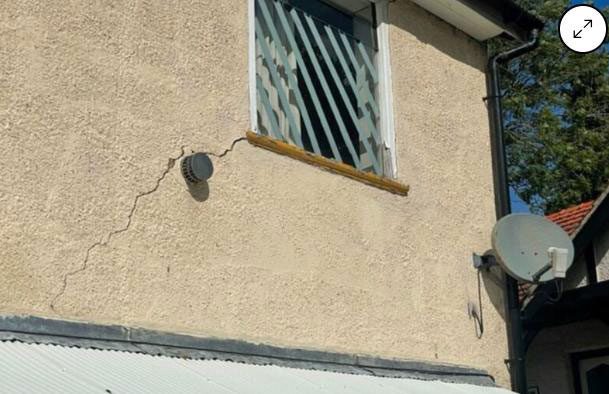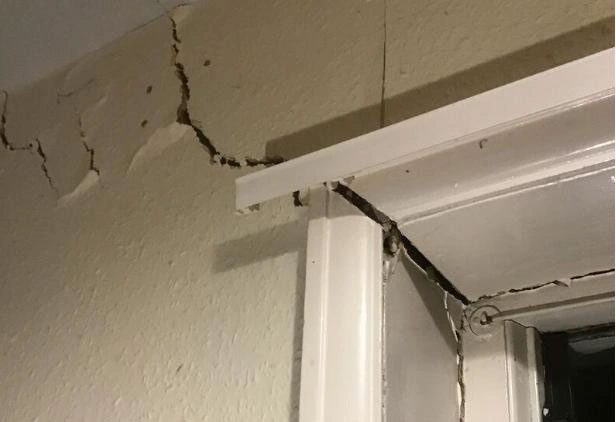Hotter summers and wetter winters are causing historic buildings that survived World War II in London (UK) to sink and lean.
The increasingly severe weather in the UK is shaking the foundations of the country’s centuries-old history. A number of historic homes in London are sinking.

Historic houses in and around London, built in the 19th century, are cracking or leaning – (Photo: ASPRRAY).
The Unique Clay Soil
Since 2022, the UK has endured an extended drought following a wet winter. This has caused the clay soil beneath the surface that covers much of southeastern England, including London, to become porous and shift more than usual.
This situation has led to the cracking or leaning of many historic homes in the city’s most affluent neighborhoods.

Dry grass in a London park during the 2022 drought – (Photo: BLOOMBERG).
Lee Jones, a geotechnical engineer at the British Geological Survey who has studied hazards in the UK for over 30 years, stated that the clay in London is “quite unique” because it can shrink and swell significantly.
He explained that when it is wetter, it swells and expands, and when it is drier, it shrinks and cracks. The severe temperatures in the future will exacerbate the impact on buildings and roads.
This summer, temperature warnings from authorities highlighted the vulnerability of historic buildings in London. Some of these buildings have existed since the mid-1800s and after World War II.
Insurance Headaches Due to Subsidence
The damage to buildings has resulted in the highest insurance payouts in nearly two decades, and experts warn the situation could worsen.
UK insurance companies had to pay £219 million ($281 million) for subsidence claims in 2022, “many of which were due to record high temperatures during the summer of 2022,” according to data released by the Association of British Insurers at the beginning of 2023.
Anthony Baddeley, network support director at Aspray Ltd., a UK-based property loss assessment company, stated: “We expect to see an increase in subsidence claims in the coming months. Many properties in the UK are built on shrinkable clay, and this exceptionally dry weather could lead to property loss.”

One in six homes in the UK was built before 1900 – (Photo: ASPRAY).
The damage from subsidence is most evident and costly in London, home to 9 million people. Subsidence can decrease the value of historic homes and may even render them unsafe to live in.
In June, Zurich Insurance Group AG reported that the UK experienced its driest February in 30 years, followed by the wettest March in over 40 years—a weather pattern that risks increasing insurance claims.
The report indicated that the total volume of claims in 2022 rose by 26% compared to 2021. In the first five months of 2023, reported claims volume increased by 40% compared to the same period in 2022.
One in six homes in the UK was built before 1900, when engineering standards at that time did not account for extreme temperatures.
Additionally, while other parts of Europe underwent large-scale reconstruction after World War II, the historic buildings of the UK remained relatively unscathed. This is why the proportion of classic housing in the UK is much higher than in many other places.


















































